Key takeaways
- Redis caching enhances application performance by storing frequently accessed data in memory, significantly reducing retrieval times.
- Effective caching requires a balance between data freshness and performance, with considerations for cache consistency and expiration.
- Optimizing Redis involves configuring settings like eviction policies, using pipelining, and monitoring data access patterns for continuous improvement.
- Implementing caching strategies should be approached thoughtfully, evaluating which data is best suited for caching to avoid bottlenecks.
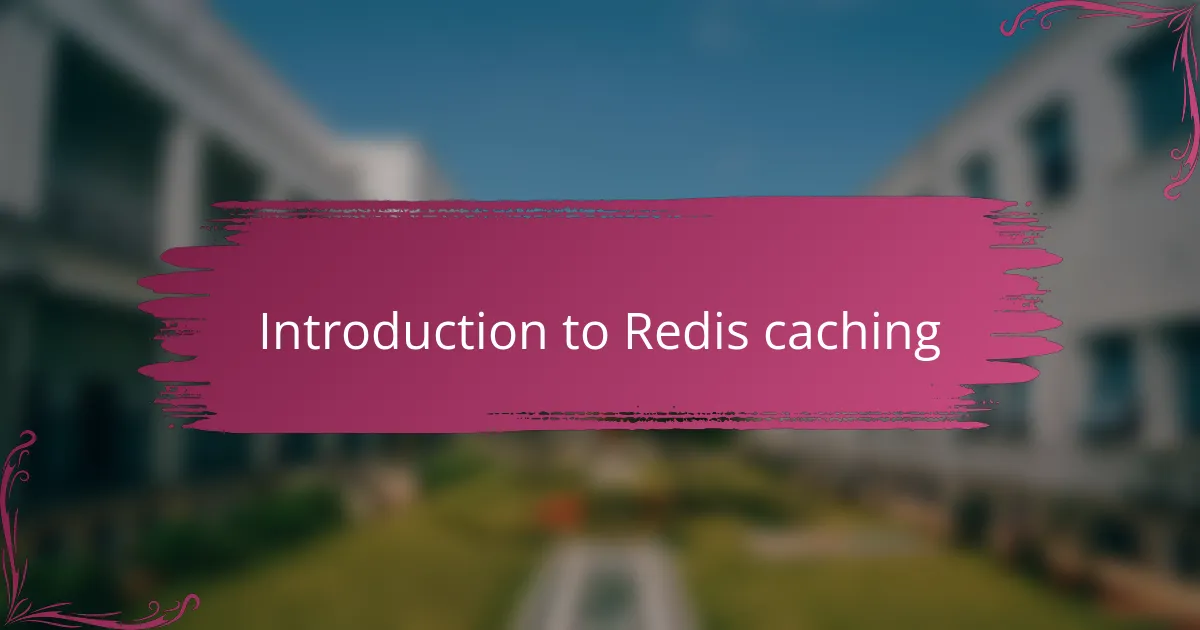
Introduction to Redis caching
Redis caching has always fascinated me because of its simplicity paired with powerful performance. When I first started using Redis, I was amazed at how it effortlessly stores data in memory, making retrieval lightning-fast compared to traditional databases.
Have you ever faced slow page loads or laggy responses in your applications? Redis caching tackles these issues by temporarily holding frequently accessed data, which means your app spends less time fetching data and more time delivering seamless experiences to users.
From my experience, integrating Redis felt like giving my projects a turbo boost. It’s not just about speed; Redis also offers flexibility with its data structures, making caching strategies more versatile and efficient. Isn’t that the kind of tool every developer hopes to find?
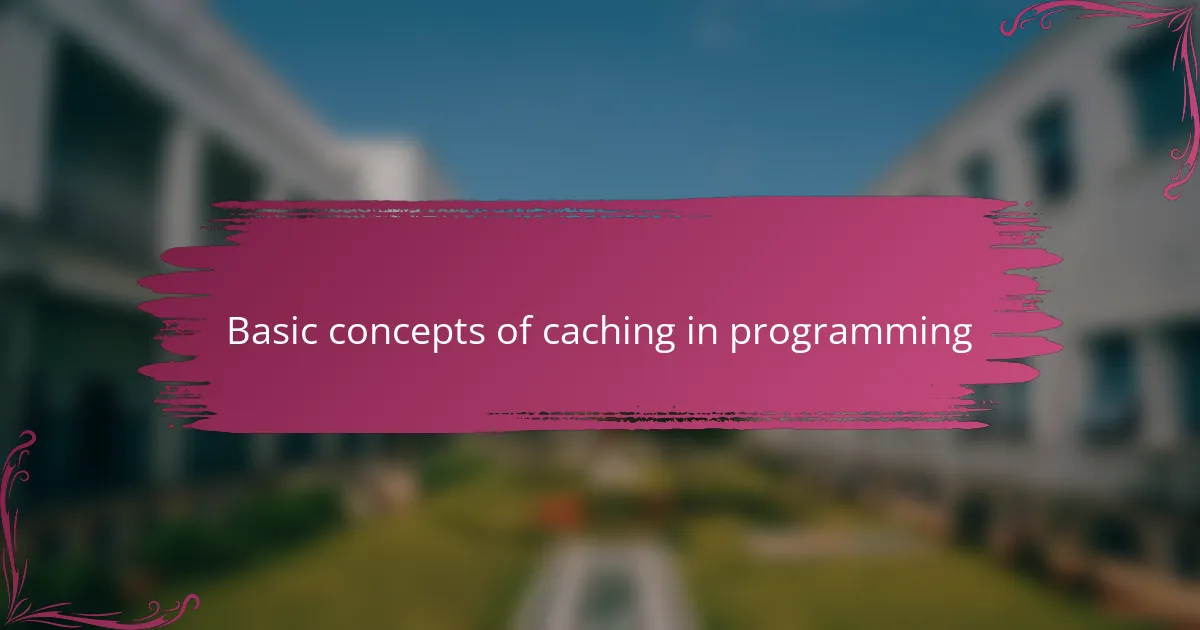
Basic concepts of caching in programming
Caching, at its core, is like having a helpful assistant who remembers the answers to your most common questions. When I first grasped this idea, it clicked for me why applications could suddenly feel so sluggish—because they were asking the same questions repeatedly without a shortcut. Doesn’t it make sense then to keep those answers close at hand, ready to be handed out instantly?
I’ve seen firsthand how caching reduces the strain on databases by storing copies of data that’s expensive to fetch or compute. It’s a straightforward trade-off: use some memory to save time. But it’s not just about speed; proper caching can transform user experience by making apps feel responsive, almost instantaneous.
Of course, caching introduces questions about consistency and staleness. I used to wonder, “What if my cache ends up serving outdated information?” It’s a valid concern and a reminder that caching isn’t a silver bullet; it requires thoughtful strategy to balance freshness and performance. But when done right, it’s like having the best of both worlds—speed without sacrificing accuracy.
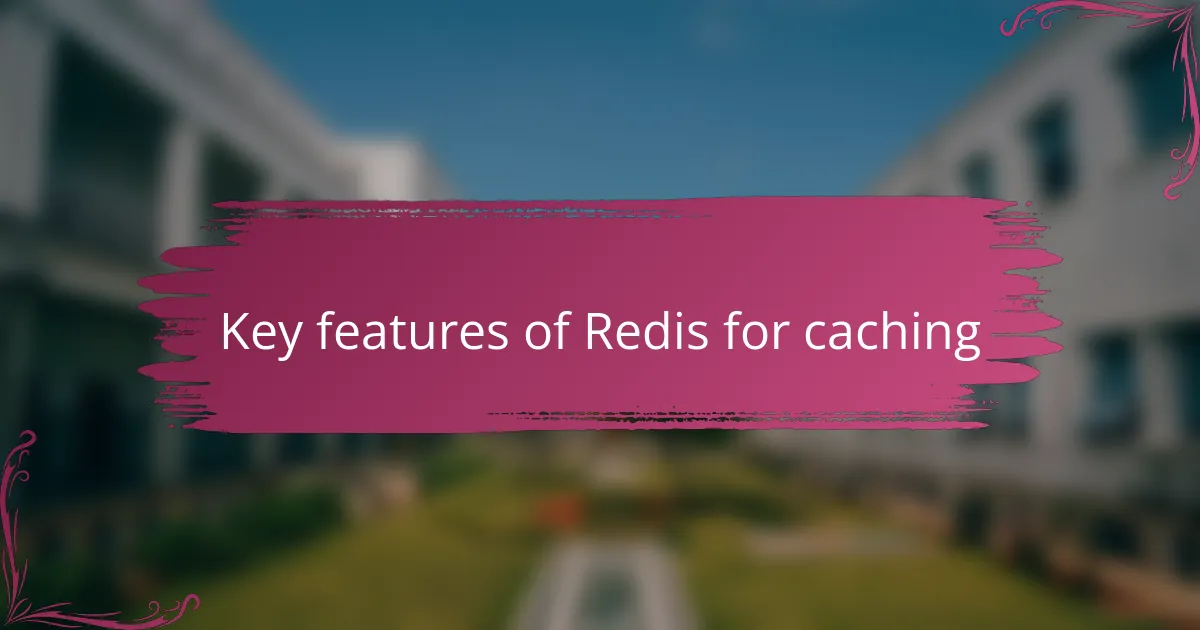
Key features of Redis for caching
One feature of Redis that really stood out to me is its in-memory data storage. Storing data directly in RAM means access times are incredibly fast—much faster than disk-based systems. When I shifted from disk caching to Redis, the difference was like night and day; my applications felt instantly more responsive.
Another aspect that I appreciate is Redis’s support for various data structures—strings, hashes, lists, sets, and more. This flexibility lets me tailor caching strategies to different scenarios, whether I’m caching user sessions or complex query results. Have you ever struggled to fit your data into a one-size-fits-all cache? Redis’s versatility solved that problem for me.
Then there’s the built-in expiration feature that automatically removes stale data. Implementing cache invalidation used to feel like a headache, but Redis made it seamless. Knowing that cached items won’t linger past their usefulness gave me peace of mind, ensuring users always get fresh-enough data without manual purging.

Setting up Redis for your application
Getting Redis up and running for my projects was surprisingly straightforward, which I think makes it an ideal starting point for many developers. I began by installing Redis on my local machine, and within minutes, the Redis server was up, ready to accept connections. Have you ever experienced the relief of seeing a service just work out-of-the-box?
Once the server was live, configuring my application to connect felt like unlocking a new level of performance. I used a simple client library for my programming language, specifying the Redis host and port, and just like that, my app was speaking to Redis. The beauty here is that Redis clients are widely available, so you rarely have to wrestle with complex setup steps.
Of course, I didn’t stop there—I wanted to ensure Redis was optimized for my specific use case. Tweaking configuration options like max memory usage and eviction policies helped me avoid unexpected cache misses down the line. It’s worth asking yourself early on: How much data am I realistically caching, and what happens when the cache fills up? Taking the time to answer those questions saved me headaches later.
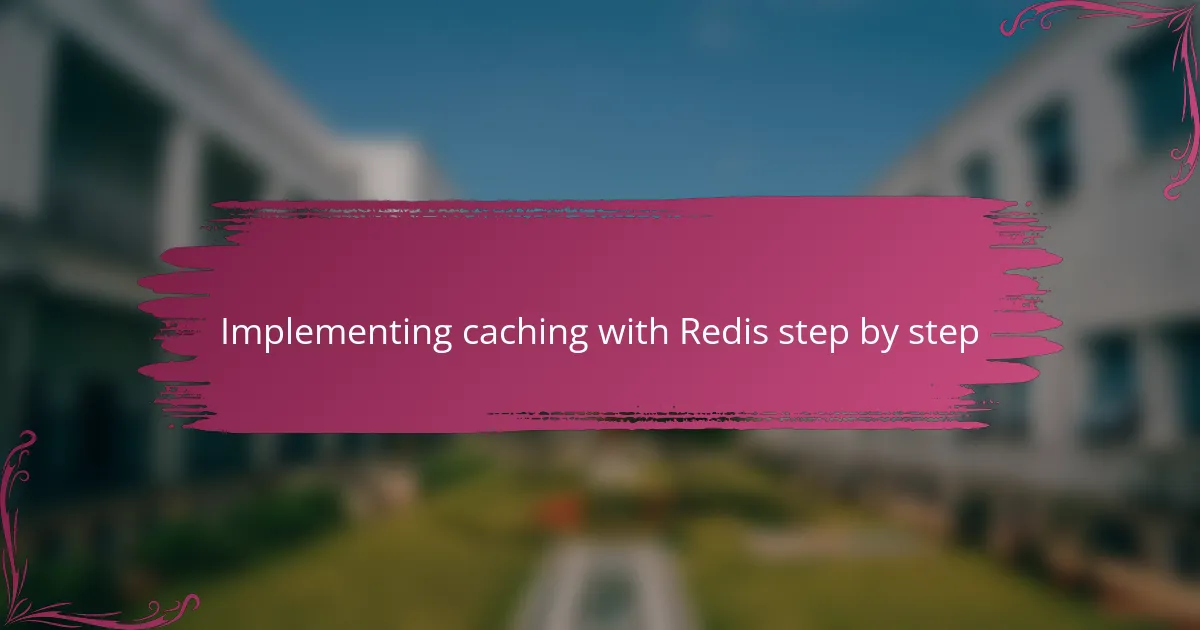
Implementing caching with Redis step by step
When I first implemented caching with Redis, I started small—caching the results of a database query that was slowing down page loads. The process was as simple as setting a key with an expiration time using Redis commands. Have you ever found yourself wondering how to keep cache data fresh? Setting expiration times in Redis felt like giving my cache a self-cleaning feature, which was a huge relief.
Next, I integrated Redis commands directly into my application’s flow. Each time a request came in, my code first checked Redis for the cached data, and only if it wasn’t there did the app query the database. This conditional check turned out to be a game changer. I remember the first time I saw response times drop dramatically—it was like watching my app finally breathe freely.
Finally, I added logic to update the cache whenever underlying data changed, ensuring consistency. At first, I worried this might complicate things, but handling cache invalidation became more manageable than I’d expected. After all, a cache is only as good as the trust you place in its accuracy, right? Redis gave me the tools to strike that balance smoothly.
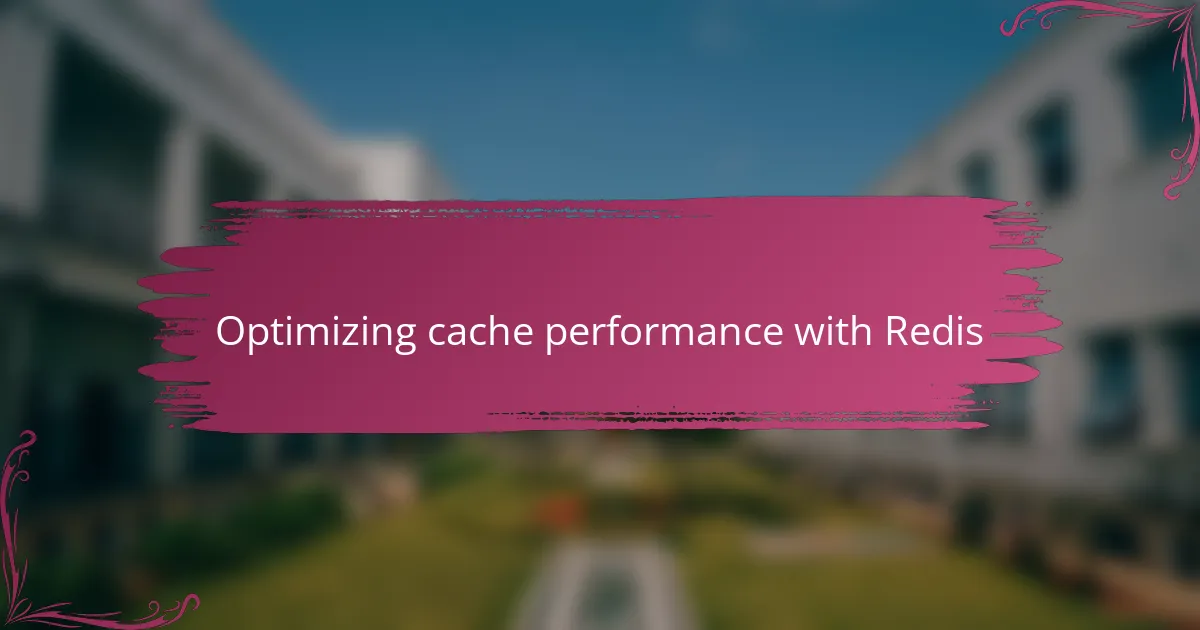
Optimizing cache performance with Redis
Optimizing cache performance with Redis meant diving deeper into its configuration settings for me. I learned that tweaking the eviction policy—deciding what data gets kicked out when memory runs low—was crucial. Have you ever wondered what happens behind the scenes when your cache fills up? Choosing the right policy felt like tuning an instrument; it made all the difference in maintaining speed without losing important data.
Another trick that really boosted performance was using Redis pipelining. Instead of sending commands one by one, batching them reduced the round-trip time dramatically. When I first tried this, I noticed a clear drop in latency, and it felt like my app finally caught up with my ambitions for responsiveness.
I also found that carefully sizing the max memory limit prevented Redis from hogging server resources. It taught me to think proactively about balance—how much data should live in the fast lane and when to gracefully evict less-needed entries. This kind of tuning requires a bit of trial and error, but the speed gains made every adjustment worth it.
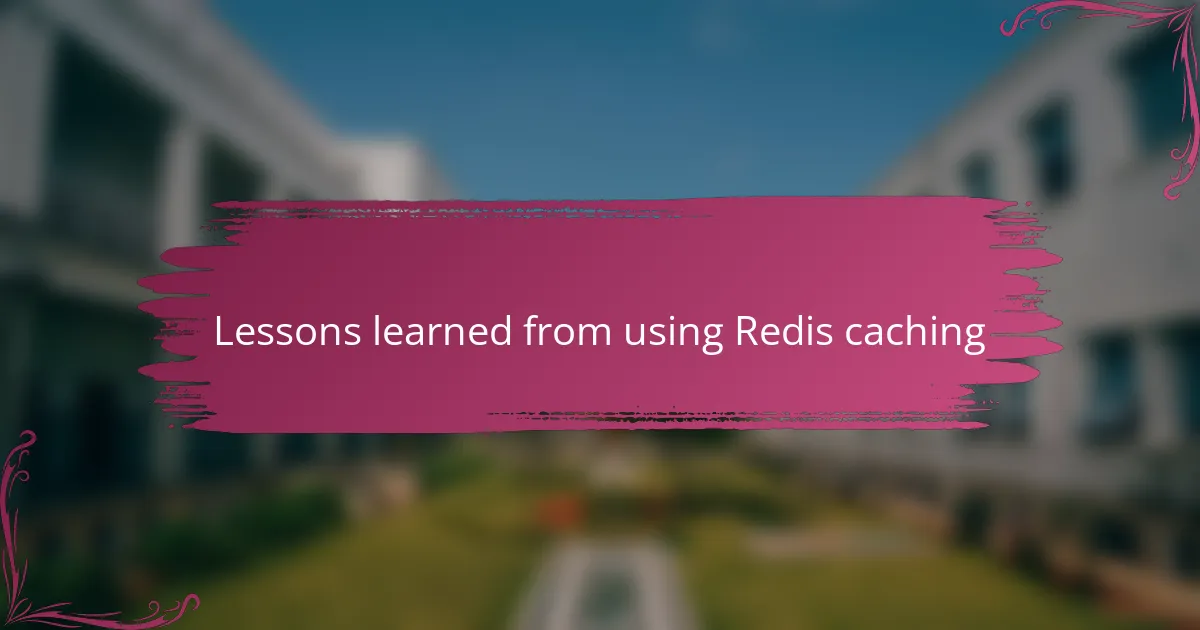
Lessons learned from using Redis caching
One lesson I quickly learned from using Redis caching is the importance of understanding your data access patterns. Initially, I underestimated how frequently some data changed, which led to serving stale information more often than I liked. Have you ever been caught off guard by cache inconsistencies? It taught me that caching isn’t just about speed—it requires a careful balance between freshness and performance.
I also discovered the value of monitoring and fine-tuning Redis configurations over time. At first, I set default expiration times and eviction policies and then forgot about them. But as my applications grew, I realized that what works on day one often needs revisiting. Tweaking these settings based on real-world usage turned out to be crucial for maintaining smooth performance without surprises.
Finally, I learned that while Redis greatly simplifies caching, it’s not a magic wand that fixes all bottlenecks automatically. Sometimes, I had to rethink which data truly benefited from caching and which was better fetched directly. This experience sharpened my judgment and helped me design smarter caching strategies—because in the end, optimal caching is as much art as it is science.